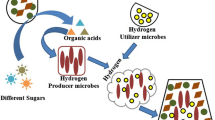
Overview
- Includes supplementary material: sn.pub/extras
Part of the book series: Current Topics in Microbiology and Immunology (CT MICROBIOLOGY, volume 322)
Buy print copy
About this book
Similar content being viewed by others
Keywords
Table of contents (12 chapters)
-
Front Matter
-
Back Matter
Editors and Affiliations
Bibliographic Information
Book Title: Bacterial Biofilms
Editors: Tony Romeo
Series Title: Current Topics in Microbiology and Immunology
DOI: https://doi.org/10.1007/978-3-540-75418-3
Publisher: Springer Berlin, Heidelberg
eBook Packages: Biomedical and Life Sciences, Biomedical and Life Sciences (R0)
Copyright Information: The Editor(s) (if applicable) and The Author(s), under exclusive license to Springer-Verlag GmbH, DE, part of Springer Nature 2008
Hardcover ISBN: 978-3-540-75417-6Published: 04 March 2008
Softcover ISBN: 978-3-642-09469-9Published: 23 November 2010
eBook ISBN: 978-3-540-75418-3Published: 26 February 2008
Series ISSN: 0070-217X
Series E-ISSN: 2196-9965
Edition Number: 1
Number of Pages: XII, 294
Number of Illustrations: 15 b/w illustrations, 21 illustrations in colour
Topics: Medical Microbiology, Pharmacology/Toxicology, Infectious Diseases



